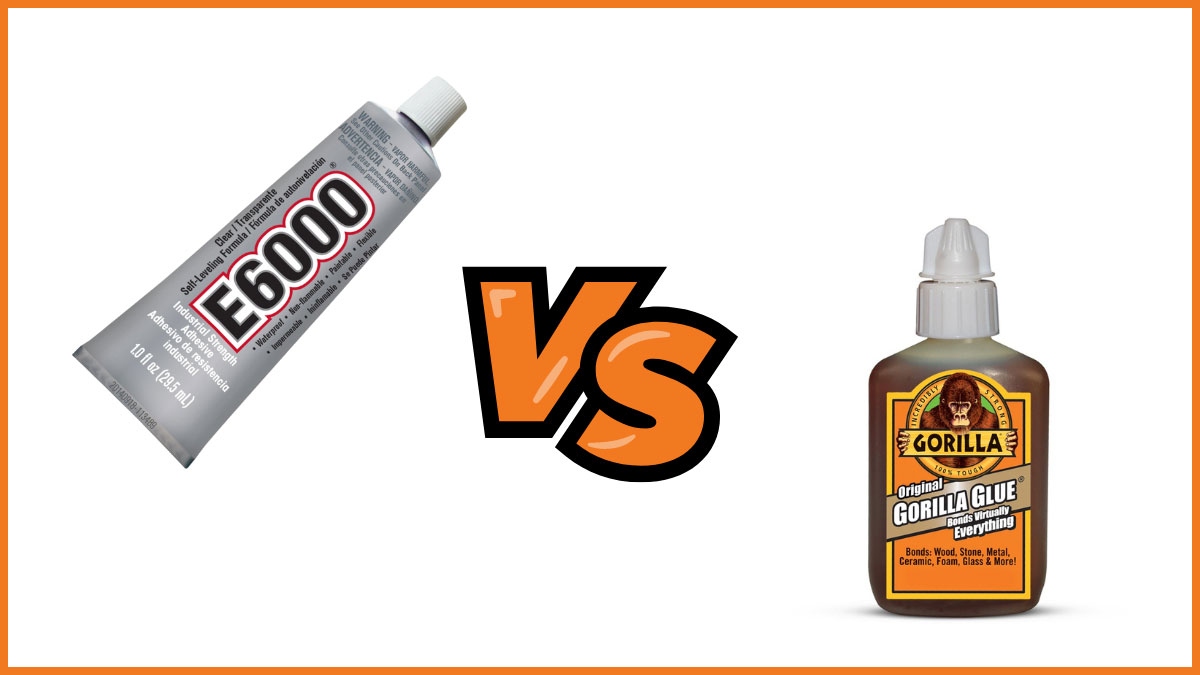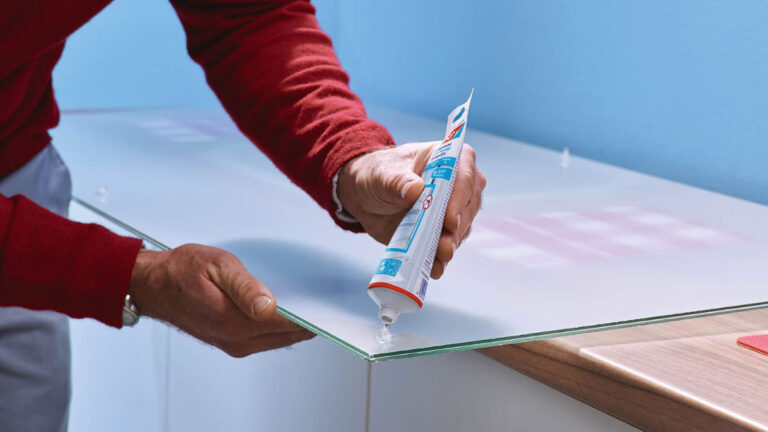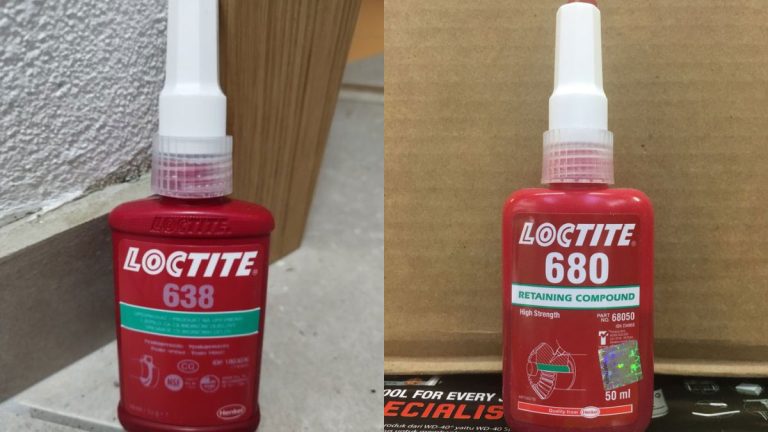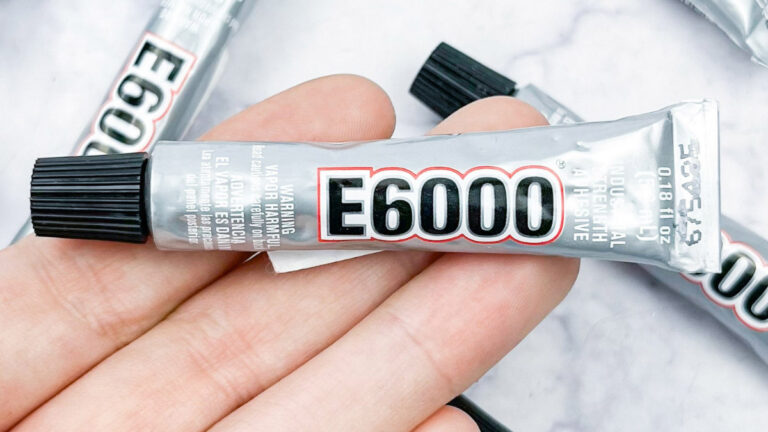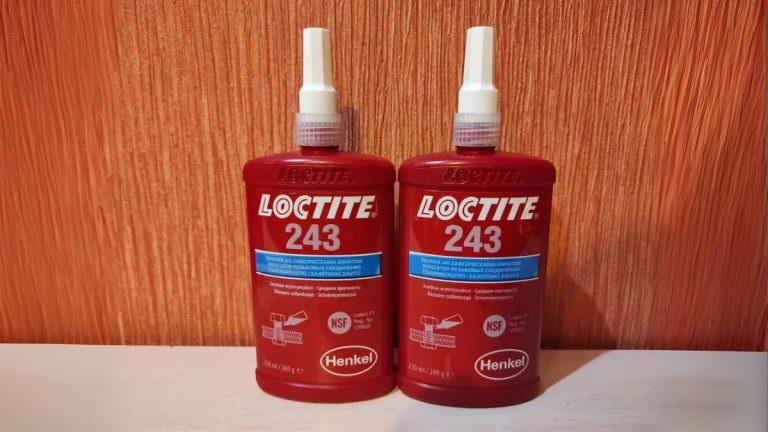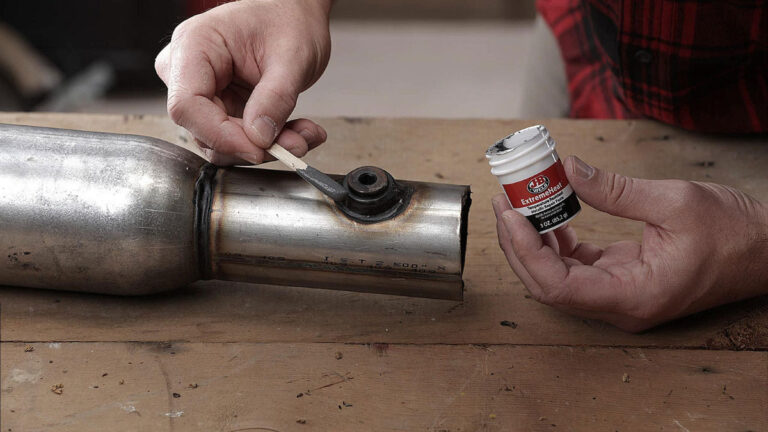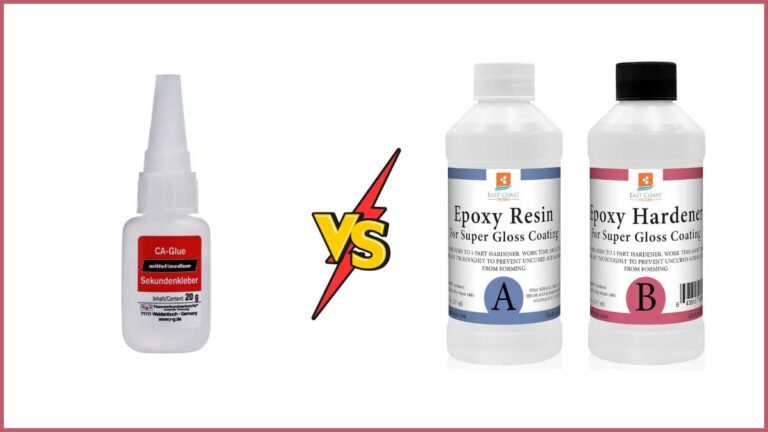E6000 vs Gorilla Glue: Which Adhesive is Best for DIY Projects?
When it comes to tackling DIY projects or quick household fixes, choosing the right adhesive can make all the difference. Two popular options that often come up are E6000 and Gorilla Glue. Each has its own strengths and ideal uses, but how do you decide which one is the best for your specific needs?
In this text, you’ll get a clear comparison between E6000 and Gorilla Glue, focusing on their properties, applications, and effectiveness. Whether you’re repairing a broken ceramic vase or crafting a new piece of jewelry, understanding the differences between these adhesives will help you make an well-informed choice and achieve the best results.
Key Takeaways
- Versatility: E6000 is ideal for delicate and flexible materials like fabric and jewelry, while Gorilla Glue excels in bonding more rigid surfaces like wood, metal, and plastic.
- Adhesive Strength: Both adhesives offer strong bonds, but E6000 is flexible and suited for projects requiring slight movements, whereas Gorilla Glue expands during curing for a robust hold.
- Drying Time: E6000 typically takes 24-72 hours to fully cure, offering time for adjustments, while Gorilla Glue generally cures in about 24 hours but has quicker bonding versions for fast repairs.
- User Experience: E6000 has a strong odor and requires good ventilation, whereas Gorilla Glue emits a milder odor and is easier to use indoors.
- Specific Uses: Choose E6000 for projects involving delicate materials and requiring flexibility; opt for Gorilla Glue for outdoor repairs and projects needing a waterproof bond.
Features and Uses
Selecting the right adhesive greatly impacts the success of your DIY projects and repairs. Comparing E6000 and Gorilla Glue uncovers their respective strengths and uses, helping you make an well-informed choice.
Versatility
E6000:
- Definition: Ready-to-use adhesive with no mixing required, directly applied from the tube.
- Suitable Surfaces: Adheres to wood, glass, ceramics, fiberglass, and fabric.
- Ideal For: Delicate items and flexible materials like fabric.
- Examples: Repairing jewelry, crafting projects involving fabrics, and delicate ceramic repair.
Gorilla Glue:
- Definition: Adhesive available in clear and white formulas; some require moistening the surface before use.
- Suitable Surfaces: Bonds metal, wood, glass, plastic, and leather.
- Ideal For: Versatile applications across various materials, except some plastics.
- Examples: Fixing wooden furniture, bonding plastic parts, and metal repairs.
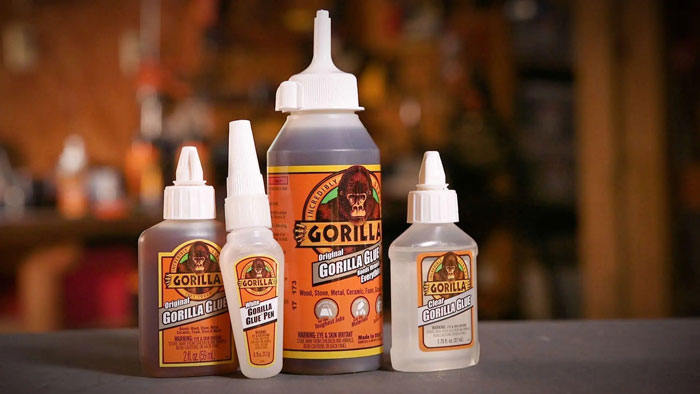
Adhesive Strength
E6000:
- Definition: Strong, flexible bond that dries clear.
- Features: Waterproof, paintable, dryer and washer safe.
- Strength: Enhances durability for crafts and repairs requiring flexibility.
- Examples: Clothing repairs, adhering to fabrics and flexible surfaces.
Gorilla Glue:
- Definition: Tough and versatile adhesive with strong bonding capability.
- Features: Expands during curing to fill gaps, creating a strong hold.
- Strength: Provides robust performance on rigid surfaces.
- Examples: Repairing broken tools, attaching wood trims, and securing loose plastic parts.
Drying Time
E6000:
- Drying Speed: Dries quickly, making it ideal for fast repairs.
- Application: Messy due to its consistency; careful handling required.
- Curing Time: Generally requires 24-72 hours for full cure.
- Examples: Quick fixes on the go, emergency repairs needing immediate bond.
Gorilla Glue:
- Drying Speed: Generally takes longer to dry, varies by formula.
- Application: Some versions necessitate surface moistening before use.
- Curing Time: Full cure often takes 24 hours, with some faster formulas available.
- Examples: Projects with ample time for curing and applications needing robust adhesion.
| Feature | E6000 | Gorilla Glue |
|---|---|---|
| Application | Direct from tube, no mixing needed | Clear and white formulas, may require surface moistening |
| Surfaces | Wood, glass, ceramics, fiberglass, fabric | Metal, wood, glass, plastic, leather |
| Properties | Waterproof, paintable, dryer/washer safe, dries clear, self-leveling | Expands during curing, strong hold |
| Bond Strength | Flexible, strong bond | Tough and versatile |
| Drying Time | Quick-drying, full cure in 24-72 hours | Variable, full cure in 24 hours |
| Common Uses | Fabric crafts, delicate repairs | Furniture repairs, plastic bonding |
Understanding these features aids in selecting the right adhesive for your specific project needs.
Pros and Cons of E6000
E6000 is a versatile adhesive known for its strong bonding capabilities across various surfaces. Let’s jump into the advantages and drawbacks to help you determine if it’s the right choice for your projects.
Pros
Multi-Surface Adhesive
E6000 effectively bonds with several materials.
- Hard plastic (e.g., acrylic, polycarbonate)
- Metal (e.g., aluminum, stainless steel)
- Ceramics (e.g., porcelain, earthenware)
- Beads (e.g., glass beads, plastic beads)
- Rhinestone gem backs
- Clay (e.g., polymer clay, air-dry clay)
- Leather (e.g., cowhide, sheepskin)
- Heavy canvas
Ready to Use
There’s no need for mixing or moistening before use. E6000 comes ready to apply directly from the tube, saving you time and effort.
Permanent Bond
The adhesive creates a strong, permanent bond. Once cured, you can trust that your projects will stay intact.
Flexible and Paintable
E6000 maintains flexibility once it dries, which makes it ideal for crafts requiring slight movements. Plus, you can paint over it to match your project’s color scheme.
Variety of Formulas
E6000 offers multiple formulas tailored to specific needs.
- Clear: for general use
- Black: for discreet applications
- White: for seamless finishing
- Bead and Jewelry: for delicate crafts
Cons
Strong Odor
E6000 emits a potent, unpleasant smell during application and curing. Ensure adequate ventilation to avoid discomfort.
Longer Curing Time
While E6000 provides a strong bond, it requires a longer curing time compared to some other adhesives. Plan your projects accordingly.
Safety Concerns
Due to strong chemicals, use in a well-ventilated area and avoid direct skin contact. Protective gear is recommended.
| Feature | E6000 | Gorilla Glue |
|---|---|---|
| Bonding Range | Multi-Surface | Wide Range |
| Application | Ready to Use | Requires Moisture |
| Bond Strength | Permanent | Robust |
| Flexibility | Yes | Limited |
| Formula Variety | Clear, Black, White, Jewelry | Original, Gel, Epoxy |
| Drying Time | 24-72 hours | 1-2 hours |
| Odor | Strong | Mild |
| Safety Concerns | High (ventilation needed) | Moderate (less ventilation) |
Understanding these pros and cons helps inform your choice between E6000 and other adhesives like Gorilla Glue.
Pros and Cons of Gorilla Glue
Understanding the strengths and limitations of Gorilla Glue helps you decide if it’s the right adhesive for your projects. Below, we detail the primary advantages and disadvantages.
Pros
- Waterproof
Gorilla Glue stands out for its waterproof quality, making it suitable for projects exposed to moisture. This is ideal for outdoor repairs or items regularly in contact with water. - Versatile
You can use Gorilla Glue on various materials, such as metal, glass, wood, and fabric. This versatility makes it a handy tool for numerous DIY projects and repairs. - Less Odor
Compared to E6000, Gorilla Glue emits a milder scent. This is beneficial for users sensitive to strong smells. - Clear and Strong
Gorilla Clear Grip offers a transparent finish along with robust bonding. This is perfect for projects where the glue must remain invisible but strong. - Flexible and Paintable
Certain types of Gorilla Glue are both flexible and paintable, adding to their adaptability. This allows you to customize the appearance of glued objects effortlessly.
Cons
- Moisture Requirement
Gorilla Glue typically needs moisture to activate. If moisture isn’t available, the glue might not perform as expected. - Expansion
It expands as it cures, which can be a challenge if not managed. Proper application is crucial to avoid gaps or overflow.
| Feature | Gorilla Glue |
|---|---|
| Waterproof | Yes |
| Versatile | Bonds metal, glass, wood, fabric, etc. |
| Odor | Less pungent compared to E6000 |
| Finish | Clear Grip offers transparent and robust bonding |
| Flexibility | Some versions are flexible and paintable |
| Activation | Requires moisture to activate |
| Expansion | Expands during curing |
By weighing these pros and cons, you can determine if Gorilla Glue aligns with your project’s specific requirements.
Comparative Analysis
When choosing an adhesive, it’s crucial to understand how each option stacks up. E6000 and Gorilla Glue both offer unique benefits, making them suitable for different applications. This section analyzes their material compatibility and ease of use.
Material Compatibility
E6000:
- Versatile Bonding: E6000 joins metal, glass, fabric, wood, ceramic, leather, paper, and plastic.
- Flexibility: Once cured, it has a rubber-like consistency, suitable for flexible joints in crafting and repair.
Gorilla Glue:
- Wide Range of Materials: Gorilla Glue connects metal, glass, fabric, wood, ceramic, leather, paper, and plastic.
- Waterproof: This adhesive remains 100% waterproof, ensuring longevity in wet conditions.
- Durability: Known for strong, long-lasting bonds, ideal for robust projects.
Ease of Use
E6000:
- User-Friendly: E6000 is ready to use, with a clear application process.
- Drying Time: Cures slower, providing time to adjust components.
- Odor: Emits a strong odor, which might require ventilation during application.
Gorilla Glue:
- Activation: Requires moisture to activate, which can be tricky.
- Expansion: Expands as it cures, filling gaps but possibly causing overflow.
- Less Odor: Emits less odor than E6000, offering a more pleasant working environment.
| Feature | E6000 | Gorilla Glue |
|---|---|---|
| Materials Bonded | Metal, Glass, Fabric, Wood, Ceramic, Leather, Paper, Plastic | Metal, Glass, Fabric, Wood, Ceramic, Leather, Paper, Plastic |
| Flexibility | High | Low |
| Waterproof | Yes | Yes |
| Cure Time | Slow | Moderate |
| Odor | Strong | Mild |
| Application Conditions | Flexible joints | Moisture needed |
| Expansion | No | Yes |
E6000 offers flexibility and time for adjustments due to its slower curing process. In contrast, Gorilla Glue provides a quick, robust bond once activated, though it requires careful handling to manage expansion. Choose based on your project needs, considering both the materials you’ll join and the working conditions.
User Experiences
Users frequently share insights about their experiences using E6000 and Gorilla Glue, highlighting differences in odor, bond strength, and ease of use. Here’s a detailed look at what they have to say about each adhesive.
Odor and Fumes
E6000:
- Strong Odor: Users often note E6000’s strong, unpleasant smell. Its odor can be overwhelming and potentially toxic, hence best used in well-ventilated areas.
- Protective Gear: Given the strong fumes, many recommend using masks and gloves for safety.
Gorilla Glue:
- Milder Odor: Compared to E6000, Gorilla Glue emits a less offensive odor. This makes it more suitable for those sensitive to strong smells.
- Indoor Friendly: Many users find it easier to use Gorilla Glue in indoor settings due to its milder fumes.
Bond Strength and Durability
E6000:
- Permanent Bond: Users laud E6000 for its robust, permanent bond. It’s particularly effective on hard surfaces like metal, glass, and ceramics.
- Versatile Use: This adhesive is often used in jewelry and craft projects due to its strong hold on various materials.
Gorilla Glue:
- Strong Bond: Users also commend Gorilla Glue for its strong adhesive properties. But, it doesn’t bond as well on all surfaces.
- Waterproofing: Many appreciate its effectiveness in waterproof projects, making it a go-to for outdoor repairs.
Application and Usability
E6000:
- Adjustable Time: E6000 offers a slower curing time, allowing adjustments during application. This flexibility can be helpful for detailed projects.
- Thicker Consistency: Users often mention its thick consistency, which makes it easier to apply precisely on small areas.
Gorilla Glue:
- Rapid Expansion: Gorilla Glue expands as it cures, which can fill gaps effectively. But, this feature requires careful application to avoid over-expansion.
- Activation with Moisture: Users must apply moisture to activate the glue. This unique requirement can be challenging but ensures a strong bond once cured.
User Recommendations
- For Delicate Projects: If you’re working on delicate crafts and need a flexible yet robust adhesive, E6000 is highly recommended.
- For Waterproofing Needs: Choose Gorilla Glue for projects where waterproofing is essential, such as outdoor repairs.
| Feature | E6000 | Gorilla Glue |
|---|---|---|
| Odor | Strong, potentially toxic | Mild, less offensive |
| Protective Gear | Recommended (masks, gloves) | Generally not needed |
| Surface Compatibility | Effective on metal, glass, ceramics | Best for wood, metal, glass, plastics |
| Waterproofing | Not specifically noted | Highly recommended for waterproofing |
| Curing Time | Slower, allows adjustments | Quick expansion, carefully monitored |
| User Preference | Crafts, jewelry projects | Outdoor and waterproof repairs |
Understanding these user experiences can guide you in selecting the right adhesive for your specific project needs. Whether you’re repairing a delicate object or requiring a durable waterproof bond, informed choices lead to successful outcomes.
Conclusion
Choosing between E6000 and Gorilla Glue depends on your project’s specific requirements. If you need a versatile, flexible adhesive for delicate items and materials like fabric or ceramics, E6000 is your go-to. Its strong, clear, and waterproof bond makes it ideal for quick repairs and crafts.
On the other hand, Gorilla Glue offers a robust hold for a broader range of materials, including metal and plastic. Its expanding nature during curing fills gaps effectively, making it perfect for heavy-duty tasks. But, it requires moisture to activate and careful handling due to its expansion.
Understanding the unique strengths and user experiences of each adhesive will help you make an well-informed choice, ensuring your DIY projects and repairs are successful.
Frequently Asked Questions
What is the main difference between E6000 and Gorilla Glue?
E6000 is a flexible adhesive ideal for delicate items and flexible materials, while Gorilla Glue is a strong adhesive that works on a wider range of materials and expands during curing.
Which adhesive dries faster, E6000 or Gorilla Glue?
E6000 generally dries faster than Gorilla Glue, allowing more time for adjustments but requiring a longer curing time for a full bond.
Is E6000 waterproof?
Yes, E6000 is waterproof, making it suitable for projects that may be exposed to water or moisture.
Can Gorilla Glue be used on all materials?
Gorilla Glue works on a wide range of materials including metal, wood, glass, plastic, and leather, making it a versatile choice for many projects.
Does E6000 have a strong odor?
Yes, E6000 has a strong odor and it is recommended to use it in a well-ventilated area and with protective gear.
What materials is E6000 best suited for?
E6000 is ideal for bonding wood, glass, ceramics, fiberglass, and fabric due to its flexible, clear-drying, and waterproof properties.
How does Gorilla Glue expand during curing?
Gorilla Glue expands as it cures, which helps to fill gaps and create a strong bond, but requires careful handling to manage the expansion.
Is Gorilla Glue safer to use indoors compared to E6000?
Gorilla Glue generally emits less odor than E6000, making it more suitable for indoor use where ventilation might be limited.
What are some common uses for E6000?
E6000 is commonly used for delicate crafts, jewelry making, repairing ceramics, and projects requiring flexibility and a strong bond.
What should I keep in mind when using Gorilla Glue?
When using Gorilla Glue, remember it requires moisture to activate and expands during curing, so careful application and monitoring are necessary.

